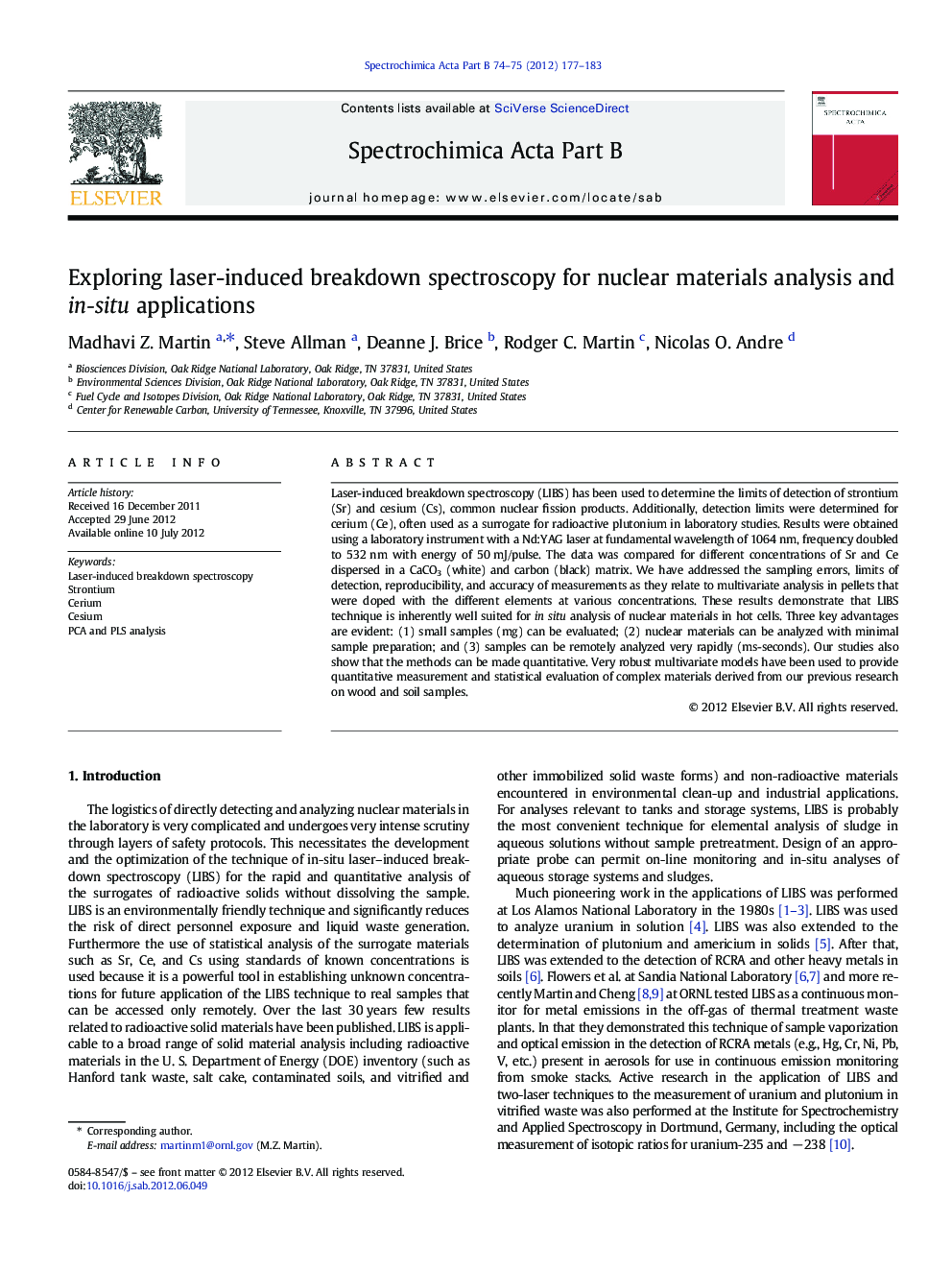| Article ID | Journal | Published Year | Pages | File Type |
|---|---|---|---|---|
| 1240355 | Spectrochimica Acta Part B: Atomic Spectroscopy | 2012 | 7 Pages |
Laser-induced breakdown spectroscopy (LIBS) has been used to determine the limits of detection of strontium (Sr) and cesium (Cs), common nuclear fission products. Additionally, detection limits were determined for cerium (Ce), often used as a surrogate for radioactive plutonium in laboratory studies. Results were obtained using a laboratory instrument with a Nd:YAG laser at fundamental wavelength of 1064 nm, frequency doubled to 532 nm with energy of 50 mJ/pulse. The data was compared for different concentrations of Sr and Ce dispersed in a CaCO3 (white) and carbon (black) matrix. We have addressed the sampling errors, limits of detection, reproducibility, and accuracy of measurements as they relate to multivariate analysis in pellets that were doped with the different elements at various concentrations. These results demonstrate that LIBS technique is inherently well suited for in situ analysis of nuclear materials in hot cells. Three key advantages are evident: (1) small samples (mg) can be evaluated; (2) nuclear materials can be analyzed with minimal sample preparation; and (3) samples can be remotely analyzed very rapidly (ms-seconds). Our studies also show that the methods can be made quantitative. Very robust multivariate models have been used to provide quantitative measurement and statistical evaluation of complex materials derived from our previous research on wood and soil samples.
► Did the detection of strontium, cerium, and cesium in CaCO3 and graphite matrices. ► The detection of these elements was performed in a systematic manner. ► Univariate calibration curves were used to determine strontium detection. ► Univariate and multivariate statistical analysis built improved statistical models. ► Limits of detection are comparable or better in case of cerium and cesium.
